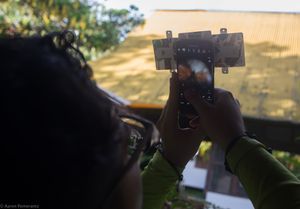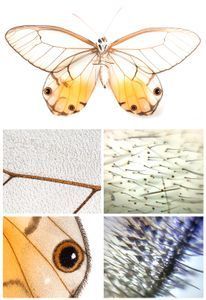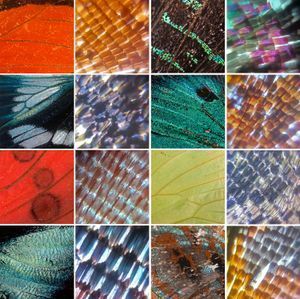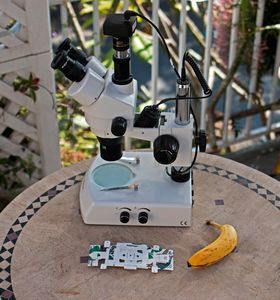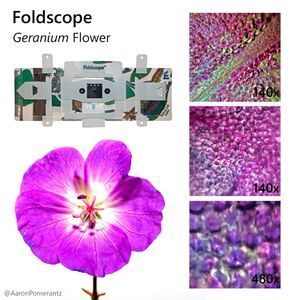Wing Scales & Structural vs Pigment Color
 Oct 02, 2015 • 12:22 AM UTC
Oct 02, 2015 • 12:22 AM UTC Brazil
Brazil 140x Magnification
140x Magnification Microorganisms
Microorganisms
Aaron Pomerantz
Learn about the author...
10posts
3comments
5locations


In the Peruvian Amazon, one can find a stunning array of butterflies along the river banks during the day. But wait, that’s no butterfly! The beautiful green Lepidoptera in the image above is actually a diurnal moth in the family Uraniidae. These moths are commonly seen gathered at mud puddles where they lap up important nutrients and minerals such as sodium. Back at my research lodge I happened to find a dead Urania moth and placed a wing under my Foldscope.
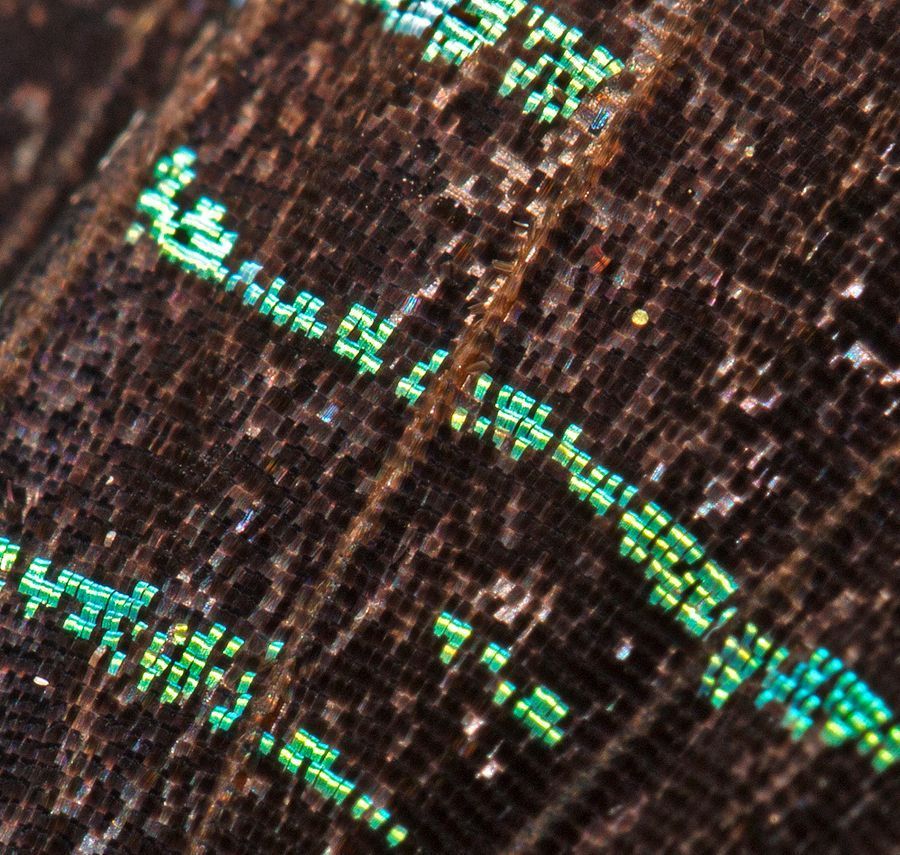
View of the wing using a Canon 100mm macro lens. You can make out the wing scales and clearly see different color patterns including green variations and black.

Now we get to the interesting part. Here is the same wing viewed at 140x in the Foldscope. Notice how the scales that appeared green before have now shifted to a violet/purple color…Interesting. I imagine that the colored scales have microstructures that produce green wavelengths under normal sunlight conditions and changing the incoming light in the microscope has shifted the wavelength output. This is the reason Morpho butterflies appear blue due to the structure of their nanoscales (called mullions ) which are spaced ~200 nm apart, producing a blue iridescent color (here’s a nice video overview https://www.youtube.com/watch?v=29Ts7CsJDpg ).
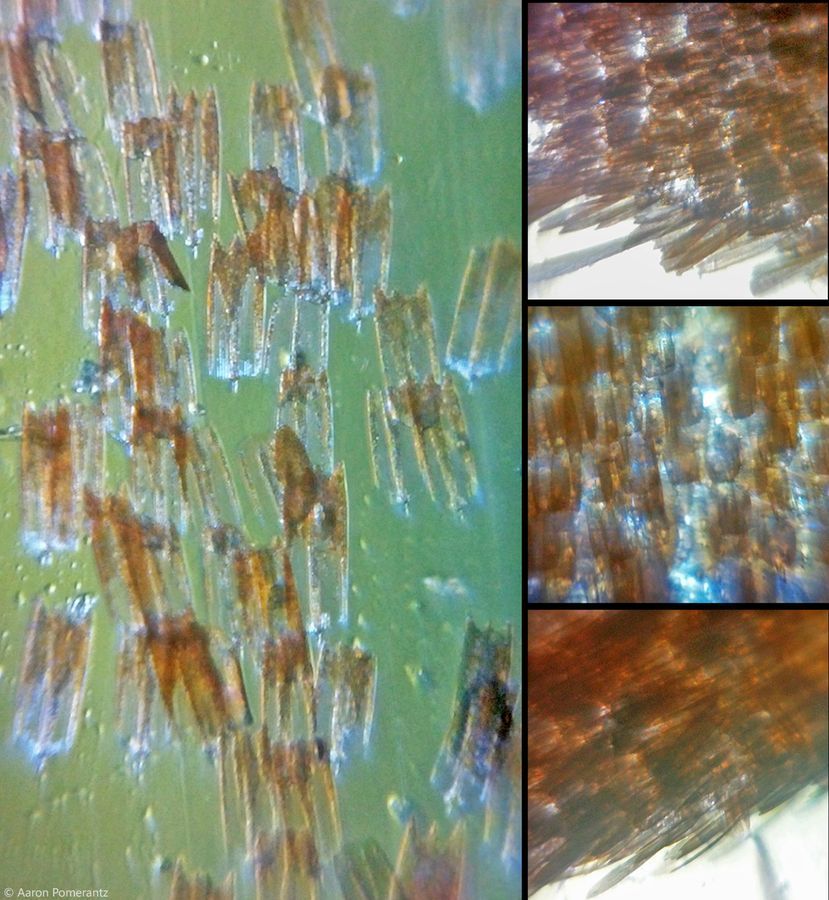
Bonus: here are the wing scales of a Skipper butterfly under the Foldscope – the color in this case appears to be due to pigmentation.
I’m interested to hear more input on butterfly wing color and structure so please feel free to leave some comments below (I also post on Twitter and Instagram ).
-Aaron
I’m interested to hear more input on butterfly wing color and structure so please feel free to leave some comments below (I also post on Twitter and Instagram ).
-Aaron
Sign in to commentNobody has commented yet... Share your thoughts with the author and start the discussion!

 0 Applause
0 Applause 0 Comments
0 Comments